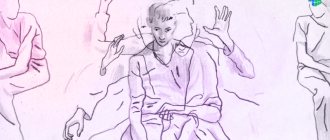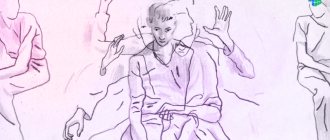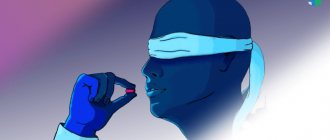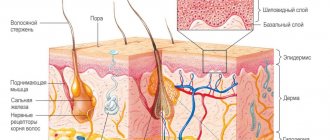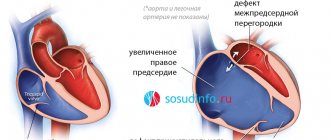Hospitalization and treatment under the compulsory medical insurance quota. More details after viewing the pictures.
Arnold-Chiari malformation in adults is accompanied by the descent and exit through the foramen magnum of the brain structures that are located in the posterior cranial fossa. At the same time, nearby brain structures are compressed. This leads to disruption of the outflow of cerebrospinal fluid and the development of hydrocephalus. Most often, the signs of Arnold-Chiari malformation are combined with syringomyelia. This is a chronic disease of the central nervous system, which is accompanied by the formation of cavities in the medulla oblongata and spinal cord.
Neurologists find it difficult to establish the true causes of the disease. Symptoms of Arnold-Chiari malformation may occur due to shrinkage of the posterior fossa. As a result, the brain structures gradually exit through the foramen magnum. The cause may also be an increase in brain size due to hydrocephalus or traumatic brain injury.
General information
In the area of the foramen magnum, where the skull connects to the spine, the spinal cord passes into the brain stem. Above is the posterior cranial fossa, which contains the pons, medulla oblongata and cerebellum.
Arnold Chiari malformation in adults and children is accompanied by the exit of the listed structures into the foramen, leading to their compression and obstruction of the outflow of cerebrospinal fluid. Ultimately, hydrocephalus develops. The disease is included in the group of congenital malformations of the craniovertebral junction.
The incidence rate is 4-7 cases per 100 thousand population. The pathology is diagnosed after birth or accidentally in adulthood, depending on the type of anomaly. It is often combined with syringomyelia.
Read also
Epicondylitis
Do you know this disgusting feeling when you are passionately doing something, and suddenly, completely by accident, your elbow bumps into something hard and in that very place, after the impact of which the whole arm weakens,…
Read more
Rehabilitation
Restoration of the body after diseases of the central and peripheral nervous system, operations on the brain and spinal cord, conditions after removal of the mammary gland due to a tumor, consequences...
More details
Ankylosing spondylitis/ankylosing spondylitis
Ankylosing spondylitis (ankylosing spondylitis) is a chronic inflammatory disease of the spine and joints, accompanied by progressive pain, stiffness and limited movement at the beginning...
More details
Restless legs syndrome
Restless legs syndrome - manifests itself as unpleasant sensations in the lower extremities, mainly in the evening and at night, forcing you to make relief movements with your legs, which leads to…
More details
Intracranial hypertension on MRI
Intracranial hypertension is an increase in intracranial pressure. Normal intracranial pressure is 15 mm Hg. When blood pressure doubles, a stroke occurs. At a pressure of 50 mm Hg, the patient can...
More details
Causes
The etiology is not reliably known. According to some neurologists, the appearance of Arnold Chiari malformation in a child is due to a decrease in the size of the cranial fossa, which predisposes structures to exit through the hole as they grow. Other experts associate the pathology with an increase in the size of the brain, which contributes to the pushing out of the contents of the cranium.
Hydrocephalus, characterized by dilatation of the ventricles, provokes an increase in the clinical picture. The manifestation of the disease can be caused by a traumatic brain injury, aggravating the herniation. This is due to improper development of the bone structures of the corresponding area.
Possible complications
Uncontrolled progression of the disease is fraught with significant complications. They do not occur in all patients, but sometimes they still occur. These include:
- Hydrocephalus, which requires a shunt and drainage of excessive cerebrospinal fluid.
- Paralysis can occur due to compression of certain structures of the spinal cord.
- Syringomyelia is a spinal disease characterized by the appearance of cystic formations in the spinal cord. Cysts filled with fluid can disrupt the functions of the spinal cord.
- Bone defects of the cervical vertebrae.
Classification
Pathology is divided into four types:
- Chiari malformation type 1 The cerebellar tonsils descend below the foramen. Characteristic of adolescents and adult patients. Often combined with hydromyelia.
- Chiari malformation type 2 is associated with the exit through the foramen of the cerebellar vermis, medulla oblongata and fourth ventricle. Hydromyelia is more common, which is associated with congenital spina bifida. Installed 1-2 days after birth.
- Chiari malformation type 3 - descended structures are located in the cervico-occipital spine.
- Chiari malformation type 4 is characterized by underdevelopment of the cerebellum without displacement of the organ.
Types II and III are often combined with other dysplasias of the nervous system: kinking of the Sylvian aqueduct, abnormalities of the corpus callosum, hypoplasia of the tentorium cerebellum.
Arnold Chiari malformation type 1
Therapy
Treatment of Arnold-Chiari malformations depends on the severity of neurological symptoms. Conservative therapy includes non-steroidal anti-inflammatory drugs and muscle relaxants. If conservative therapy is unsuccessful within 2–3 months or the patient has a severe neurological deficit, surgical intervention is indicated. During the operation, compression of the nerve structures is eliminated and cerebrospinal fluid flow is normalized by increasing the volume (decompression) of the posterior cranial fossa and installing a shunt. Surgical treatment is effective, according to various sources, in 50–85% of cases; in the remaining cases, symptoms do not completely regress. Surgery is recommended before severe neurological deficits develop, as recovery is better with minimal changes in neurological status. Such surgical treatment is performed in almost every federal neurosurgical center in Russia and is carried out as part of high-tech medical care under the compulsory medical insurance system.
Patients with Arnold-Chiari malformation types 0 and 1 may not even know they have this disease throughout their lives. Due to prenatal diagnosis of MAC types II, III and IV, children with this pathology are born less and less often, and modern nursing technologies can significantly increase the life expectancy of such children.
Sources
- Arnold-Chiari malformation. Prenatal and clinical observations Avramenko T.V., Shevchenko A.A., Gordienko I.Yu. Bulletin of VSMU. –2014. - No. 2. - P. 87–95.
- Bogdanov E.I. Arnold-Chiari malformation: pathogenesis, clinical variants, classification, diagnosis and treatment / E.I. Bogdanov, M.R. Yarmukhametova // Vertebroneurology. - 1998. - No. 2–3. — pp. 68–73.
- Arnold-Chiari malformation: classification, etiopathogenesis, clinic, diagnosis: (literature review) / L. A. Dzyak [et al.] // Ukrainian Neurosurgical Journal. - 2001. - No. 1. - P. 17–23.
- Egorov O. E. Clinic and surgical treatment of Chiari malformation type 1 / O. E. Egorov, G. Yu. Evzikov // Neurological Journal. - 1999. - No. 5. - P. 28–31.
- Kantimirova E. A., Schneider N. A., Petrova M. M., Strotskaya I. G., Dutova N. E., Alekseeva O. V., Shapovalova E. A. Occurrence of Arnold-Chiari anomaly in neurologist practice. Neurology, Neuropsychiatry, Psychosomatics. — 2015. No. 4. — pp. 18–22.
- Latysheva V. Ya., Olizarovich M. V., Filyustin A. E., Gurko N. A. Clinical and tomographic relationships in Arnold-Chiari syndrome. International Journal of Neurology. 2011; (7): 6–11.
- Yurkina E. A. Clinical, neurological and neuroimaging comparisons of anomalies of the craniovertebral region in adults. Dissertation for the degree of candidate of medical sciences St. Petersburg, 2021.
Symptoms
The clinical picture of the pathology consists of the following syndromes:
- cerebrospinal fluid hypertension;
- cerebellobulbar;
- syringomyelic.
Symptoms may be supplemented by lesions of the cranial nerves.
Liquor-hypertensive syndrome is accompanied by headaches, which intensify with minimal physical activity (coughing, sneezing), vomiting (independent of food intake). Damage to the cerebellum is manifested by speech and gait disturbances and nystagmus. During the examination, the doctor identifies hypertonicity of the cervical muscles.
Cerebellobulbar syndrome involves decreased vision and hearing, double vision, difficulty swallowing, dizziness, sleep apnea, fainting, orthostatic collapse (the patient loses consciousness when standing up suddenly). Turning the head increases dizziness, even to the point of loss of consciousness. Sometimes a change in voice (hoarseness) and difficulty breathing are noted. In extreme cases, tetraparesis develops - lack of movement in the limbs.
Syringomyelic syndrome is characterized by sensory disturbances, muscle wasting, and dysfunction of the pelvic organs (intestines, bladder). However, the size and location of the cyst does not correlate with the severity of the neurological deficit.
Types II and III are diagnosed at birth: noisy breathing, periodic cessation of breathing, laryngeal paresis, reflux of food into the nose. In newborns, nystagmus, increased tone of the arm muscles, and cyanosis during feeding are determined. The severity of movement disorders varies. Option III of the anomaly is not compatible with life.
Clinical manifestations of Chiari syndrome
The most common type of Chiari disease is the first. It manifests itself in the following clinic:
- Headaches in the occipital and cervical region, which become stronger when straining or coughing;
- Nausea and vomiting that occurs regardless of food intake;
- Speech function disorders;
- Involuntary oscillatory eye movements;
- Coordination motor disorders;
- Severe dizziness and tinnitus when turning the head, even to the point of fainting;
- Impaired motor activity of the laryngeal muscles and atrophy of half the tongue may be detected.
Diagnostics
Standard neurological tests and examinations do not allow a diagnosis to be made. They help identify symptoms of increased pressure in the brain. X-ray examination of the skull reveals bone lesions, sometimes combined with Chiari malformation.
MSCT of the brain is aimed at diagnosing bone lesions and does not allow reliably assessing the condition of soft tissues. An accurate diagnostic method is MRI, which requires the patient to remain motionless for a long time, which is difficult to achieve with children. In such cases, they resort to drug sedation. To determine the extent of the pathological process, an MRI of the brain, cervical and thoracic spine is performed.
Drug therapy for Arnold-Chiari malformation
Sometimes the condition can be stabilized by drug therapy, which can be used to:
- reduce increased intracranial pressure
- improve blood circulation and metabolism of the brain
- reduce pain and increased muscle tone
- facilitate the transmission of nerve impulses
However, conservative therapy does not eliminate the true cause of the disorders. And if they are pronounced, they immediately proceed to surgical treatment, since long-term compression of brain structures leads to irreversible changes in them that do not disappear even after the compression is eliminated.
Treatment
Forms without symptoms do not require active treatment. For pain, painkillers, anti-inflammatory drugs, and centrally acting muscle relaxants are prescribed. Surgery is used for neurological deficits and pain that cannot be controlled by medications.
The main treatment method for Chiari malformation is craniovertebral decompression. It involves widening the foramen magnum by removing a portion of the occipital bone. In addition, they eliminate compression of brain structures by resecting the cerebellar tonsils and the posterior sections of 2 adjacent cervical vertebrae, and normalize the circulation of cerebrospinal fluid. In certain cases, shunts are installed to drain fluid into the chest or abdomen.
Types of Chiari malformation and symptoms
The first type is the most common. Only the cerebellar tonsils extend beyond the skull. Symptoms are often absent or mild.
The second type is characterized by displacement of almost the entire cerebellum and medulla oblongata into the spinal canal. As a rule, it is accompanied by pronounced and varied clinical manifestations. Syndromes may occur:
- intracranial hypertension and hydrocephalus
- cerebellar dysfunction
- bulbar dysfunction
- pyramidal insufficiency
- radicular
- vertebrobasilar insufficiency
- syringomyelic
The third and fourth types lead to death in the first days of life due to severe compression of vital nerve structures, multiple anomalies in the transition area of the skull and spine, and underdevelopment of the cerebellum.
Preventive measures
Prevention of the occurrence of the syndrome lies in the careful attitude of the pregnant woman to her health and the health of the baby. She is advised to eat healthy foods and stop smoking and drinking alcohol. The recommendations of the attending physician must be followed in full, this also applies to taking medications. All this will help reduce the likelihood of developmental defects in the baby to a minimum.
Arnold Chiari syndrome is a very rare birth defect. But with timely diagnosis and treatment of this disease, you can almost completely get rid of neurological manifestations and become a healthy person. Therefore, it is so necessary to promptly contact highly specialized clinics, such as Israeli clinics.
